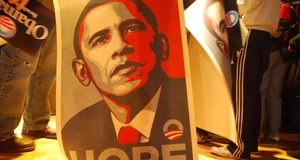Election SeasonComparing the Effectiveness of Positive and Negative Political Campaigns
By
2015, Vol. 7 No. 11 | pg. 2/2 | « LimitationsThis research admittedly has several limitations, not the least of which is the very real complexity of elections, a complexity that has always hindered research on the subject. While the evidence reviewed in this article does suggest that positive campaigns are more effective and desirable than negative campaigns, running a positive campaign can never guarantee a victory for any candidate in and of itself. There are simply too many other variables that play a significant role in elections for any one of them to be a silver bullet. For instance, things as seemingly trivial as a candidate’s physical attributes have been shown repeatedly by social scientists to correlate positively with winning elections. Examples of these characteristics are a candidate’s “facial appearance, height, body weight, race, age…, and sex” (Antonakis, 2011, p. 274), and all of these have found their way into the spotlight of the political discourse over the past several years. In 2008, many were worried about Republican, John McCain’s age during his run for president; also in 2008, race took the stage with Barack Obama becoming the first African American president in U.S. history; weight has been a significant concern for presidential hopeful Chris Christie, and Hillary Clinton is currently poised to become the Democratic Party’s first female nominee for president. Numerous other variables that factor into elections can be found in Allan J. Lichtman’s Keys to the White House. This book contains a 13 “key” system for predicting the popular vote in presidential elections, a system that has accurately predicted every such election since 1860 with only two exceptions. While the book is intended specifically to predict the outcomes of presidential elections, however, several of the keys it mentions are of significance in congressional and gubernatorial elections as well.Some examples include the incumbency of a candidate, the absence of major scandal, the advent of major social unrest, the state of the economy, major policy changes, the charisma of the incumbent-party candidate, and the charisma of a challenger. Jacobson (2006) also shows that campaign spending in congressional elections consistently and positively reflects how well challengers do in such contests (p. 201), and Hillygus and Shields (2004) show that party affiliation within the electorate is incredibly important as both Republicans and Democrats tend to be “exceedingly loyal to their party’s candidate regardless of their position on the issues” (p. 203). In addition to the wide variety of variables that can impact campaigns and make it difficult to isolate and quantify the results of positive campaigning, the general conclusion of this article – that positive campaigns are more effective than their counterparts – is largely theoretical, though based as much as possible on evidence from empirical studies and real life happenings. In order to effectively measure the effect of positive campaigning, studies should focus on campaigns within districts and states that have mostly identical numbers of Republican and Democratic voters and a large percentage of unaffiliated voters between the two parties. To the extent possible, such research should also control for other variables affecting campaigns by selecting races in which there is no incumbent running, where both candidates share similar physical characteristics, where each candidate has similar access to funds, and where policy and the economy are in a general state of quiet equilibrium. ConclusionThe preponderance of the evidence shows that positive campaigns are more effective than negative ones. Psychology teaches us that people prefer and are more trusting of positive and kind people as compared to negative ones. This preference would logically extend into the sphere of elections, making people more likely to trust and vote for candidates who run a positive and clean campaign. When considering the viability of the various studies conducted in social science, a comparison of the methods used in said studies necessarily indicates that greater weight should be given to the studies that show a mobilizing effect for positive campaigns and a demobilizing effect for negative campaigns, again indicating that positive campaigns will increase the total number of voters in an election and that, logically, the majority of the voters who would have stayed home had a campaign been negative will vote for the candidate whose positive campaign drew them to the polls. The success of Ken Hechler, Deb Fischer, and Pat McCrory further indicate that smart, hard-working people who run positive campaigns will be rewarded for their efforts. Those who their campaign cleanly will perform better than those who do not. Americans dislike negative campaigns. Those who are more educated want candidates to focus on issues. Those who are less educated, want candidates who make it easier for them to participate in elections by not forcing them to wade through an ocean of facts to discern the truth of each and every negative comment made about a candidate’s opponent. Candidates are “perceived as stronger when they [present] positive ads” (Basil, Schooler, & Reeves, 1991, p. 256); they are better liked, and those who use negative ads are deemed less favorable for doing so. The inescapable implication of these facts is that those who their campaign cleanly will perform better than those who do not. Politicians and would-be politicians alike should take notice of this. Not only will a general shift away from conventional trends improve their performance, it will also improve the quality of democracy in America as more citizens exercise their right and responsibility to vote. Any politician who claims a love for democracy, then, should show that love by taking the high road in campaigns. In this case, integrity need not even be the only motivation for doing so. While that would be ideal, the evidence shows that running a positive campaign is simply the most logical thing to do. ReferencesAbramo, Z., Beam, M., Butner, J., & Lane, J. (2012, November 9). Running a Positive Campaign Can Be Done. UNCW Department of Communication Studies. University of North Carolina Wilmington. Ansolabehere, S., Iyengar, S., & Simon, A. (1999). Replicating Experiments Using Aggregate and Survey Data: The Case of Negative Advertising and Turnout. The American Political Science Review, 93, 901-09. Ansolabehere, S. & Iyengar, S. (1996). Going Negative: How Campaign Advertising Shrinks and Polarizes the Electorate. New York: Free Press. Ansolabehere, S., Iyengar, S., Simon, A., & Valentino, N. (1994). Does Attack Advertising Demobilize the Electorate? The American Political Science Review, 88, 829-38. Antonakis, J. (2011). Predictors of Leadership: The Usual Suspects and the Suspect Traits. In The SAGE Handbook of Leadership. Eds. Alan Bryman, David Collinson, Keith Grint, Brad Jackson, and Mary Uhl-Bien. London: SAGE Publications Ltd., 269-84. Bailey, K. (2008). Methods of Social Research. 4th ed. New York: Free Press. Bamesberger, M. (2012, November 6). Backers Salute Fischer for ‘Positive’ Campaign. Journal Star [Lincoln, NE]. Basil, M., Schooler, C., & Reeves, B. (1991). Positive and Negative Political Advertising: Effectiveness of ads and Perceptions of Candidates. In Television and Political Advertising: Volume I: Psychological Processes. Ed. Frank Biocca. London: Routledge, 245-62. Cabrera, E. F. (2012). The Six Essentials of Workplace Positivity. People & Strategy, 35, 50-60. Carraro, L., Gawronski, B., & Castelli, L. (2010). Losing on All Fronts: The Effect of Negative versus Positive Person-based Campaigns on Implicit and Explicit Evaluations of Political Candidates. The British Journal of Psychology, 49, 453-70. Cohn, H. (1959). How to Get Elected to Congress. Pageant. Dalakas, V., Madrigal, R., & Anderson, K.L. (2004). ‘We Are Number One!’ The Phenomenon of Basking-in-Reflected-Glory and Its Implications for Sports Marketing. In Sports Marketing and the Psychology of Marketing Communication. Eds. Lynn R. Kahle and Chris Riley. London: Psychology Press, 67-79. Desposato, S. (2007). The Impact of Campaign Messages in New Democracies: Results from an Experiment in Brazil. Donahue, S. (2011). The Effects of Negative Political Advertising on Young College-Educated Voters. Unpublished Manuscript. Goldstein, K. & Freedman. P. (2002). Campaign Advertising and Voter Turnout: New Evidence for a Stimulation Effect. The Journal of Politics, 64, 721-40. Hillygus, D. S. & Shields, T.G. (2005). Moral Issues and Voter Decision Making in the 2004 Presidential Election. Political Science & Politics, 38, 201-9. Hibbing, J. R. & Elizabeth T. (2002). Stealth Democracy: Americans’ Beliefs about How Government Should Work. Cambridge: Cambridge University Press. Hudson, M. (2012, October 3). Democratic Leaders Endorse Pat McCrory for Governor. Beach Carolina Magazine. Jacobson, G. C. (2006). Measuring Campaign Spending Effects in U.S. House Elections. In Capturing Campaign Effects. Eds. Henry E. Brady and Richard Johnston. Ann Arbor: University of Michigan Press, 199-220. Kahn, K. F. & Kenney, P.J. (1999). Do Negative Campaigns Mobilize or suppress Turnout? Clarifying the Relationship between Negativity and Participation. American Political Science Review, 93, 877-89. Kamber, V. (1997). Poison Politics: Are Negative Campaigns Destroying Democracy? New York: Basic Books. Lau, R. R., Sigelman, L., & Rovner, I.B. (2007). The Effects of Negative Political Campaigns: A Meta-Analytic Reassessment. The Journal of Politics, 69, 1176-1209. Lichtman, A. J. (2008) The Keys to the White House: A Surefire Guide to Predicting the Next President. Blue Ridge Summit: Rowman & Littlefield. Lipsitz, K., Trost, C., Grossmann, M., & Sides, J. (2005). What Voters Want From Political Campaign Communication. Political Communication, 22, 337-54. Martin, P. S. (2004). Inside the Black Box of Negative Campaign Effects: Three Reasons Why Negative Campaigns Mobilize.” Political Psychology, 25, 545-62. Min, Y. (2004). News Coverage of Negative Political Campaigns. The Harvard International Journal of Press/Politics, 9, 95-111. Political Rules of the Road: Representatives, Senators and Presidents Share Their Rules for Success in Congress, Politics, and Life. (2009). Eds. Lou Frey Jr. and Aubrey Jewett. Lanham: University Press of America Powell, R. R. (1997). Basic Research Methods for Librarians. 3rd ed. Westport: Greenwood Publishing Group. Staw, B. M. (2013). The Dispositional Approach to Job Attitudes: An Empirical and Conceptual Review.” In Personality and Organizations. Eds. Benjamin Schneider and D. Brent Smith. London: Psychology Press, 163-91. Trent, J. S., Friedenberg, R.V., & Denton, R.E. (2011). Political Campaign Communication: Principles and Practices. 7th ed. Blue Ridge Summit: Rowman & Littlefield. Tysver, R. (2012, May 16). Fischer Trips Bruning, Will Take on Kerrey for Senate Seat. Kearney Hub [Kearney, NE]. Walton, D. (2012, November 6). Victorious Fischer: “I will stand for you.” Journal Star [Lincoln, NE]. WRAL News. (2012, November 7). McCrory to Take Team Approach to Tackling NC’s Problems. [Raleigh, NC]. Warren, K. F. ed. (2012). Encyclopedia of U.S. Campaigns, Elections, and Electoral Behavior. Thousand Oaks: SAGE Publications, Inc. Weisbecker, L. (2012, November 7). N.C. Gov. – Elect McCrory: We did not run one negative ad during campaign. Triangle Business Journal. Suggested Reading from Inquiries Journal
Inquiries Journal provides undergraduate and graduate students around the world a platform for the wide dissemination of academic work over a range of core disciplines. Representing the work of students from hundreds of institutions around the globe, Inquiries Journal's large database of academic articles is completely free. Learn more | Blog | Submit Latest in Political Science |
















